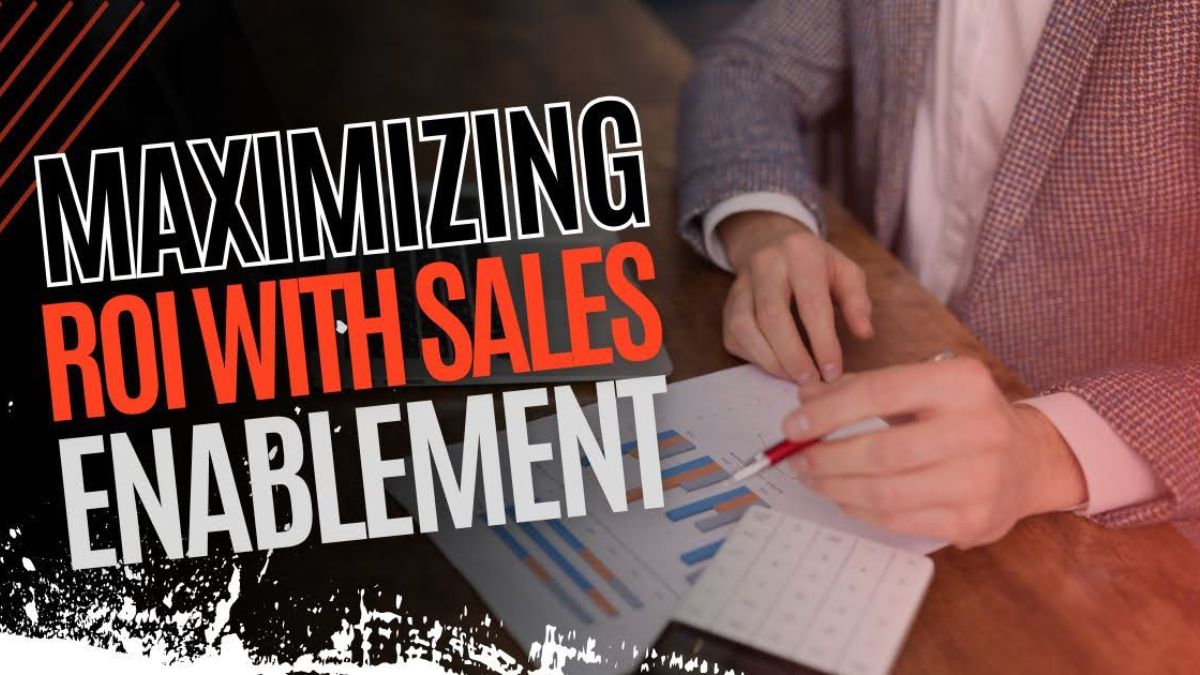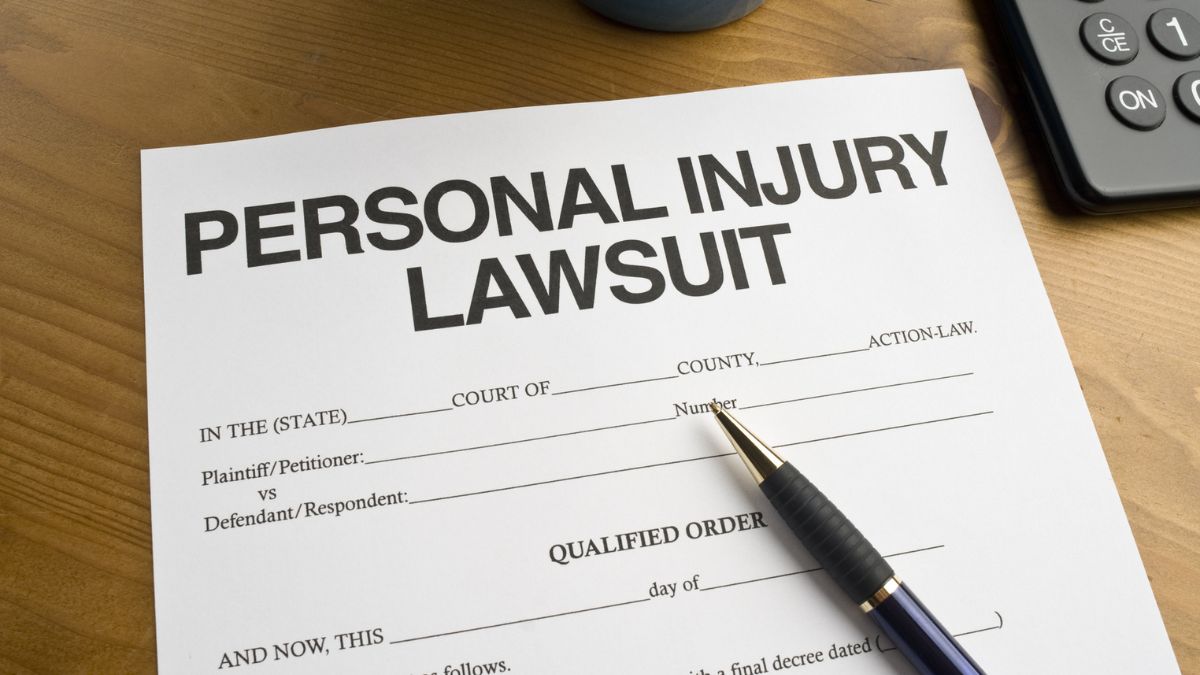TOPIC
Maximizing ROI with Sales Enablement: How Tools Drive Revenue Growth

How long have you been sticking with the same sales strategies? The business landscape has changed dramatically, and traditional sales approaches no longer guarantee success. The shift to virtual and hybrid selling models has redefined how businesses engage with prospects. To remain competitive, companies must prioritize ROI-driven sales enablement strategies that boost efficiency, accelerate revenue growth, and maximize sales performance.
Sales enablement is not just about providing tools—it’s a critical investment in business success. A well-implemented sales enablement strategy increases win rates, shortens sales cycles, and ensures every dollar spent yields tangible results. But how can you ensure your enablement initiatives deliver a high return on investment (ROI)?
Understanding Sales Enablement ROI
Sales enablement tools are technology solutions designed to maximize revenue potential by streamlining access to sales content, training, and performance analytics. These tools provide sales reps with real-time insights, automated workflows, and data-driven strategies, allowing them to close deals more efficiently and effectively. ROI in sales enablement is measured by its impact on productivity, revenue growth, and cost savings.
At their core, these tools align sales, marketing, and customer success teams to ensure a seamless and consistent buyer experience. By centralizing resources and automating processes, businesses reduce operational inefficiencies, lower acquisition costs, and improve overall sales performance.
Common Sales Challenges Impacting ROI
Global sales teams face several roadblocks that hinder revenue growth. Addressing these challenges through sales enablement tools is key to improving ROI.
- Slow onboarding and training: Lengthy ramp-up times reduce productivity and delay revenue generation.
- Inconsistent messaging: Misaligned communication between sales and marketing leads to lost opportunities.
- Inefficient sales processes: Reps spend too much time searching for materials instead of selling.
- Data blind spots: Lack of visibility into sales performance prevents informed decision-making.
- Adaptation to market changes: Sales teams struggle to keep up with shifting buyer preferences and competitive landscapes.
How Sales Enablement Tools Drive ROI
Faster Onboarding and Increased Productivity
Sales enablement tools significantly reduce the time for new hires to become fully operational. Automated training programs and interactive learning modules allow reps to learn at their own pace, reducing training costs and accelerating time-to-productivity. Businesses experience higher rep retention and faster deal closures with a structured onboarding process.
Improved Sales Effectiveness and Higher Win Rates
Providing sales reps with real-time, data-backed insights ensures they approach prospects with the right message at the right time. AI course creators analyze buyer behaviors and suggest tailored engagement strategies, leading to higher conversion rates and larger deal sizes.
Enhanced Alignment Between Sales and Marketing
A common challenge for revenue teams is misalignment in messaging and content accessibility. Sales enablement platforms centralize sales materials, pitch decks, and competitive insights, ensuring reps have the most relevant information at their fingertips. This alignment improves lead conversion and maximizes marketing ROI by increasing content utilization.
Increased Efficiency and Time Optimization
Sales reps spend up to 65% of their time on non-selling activities, such as searching for content or entering data manually. Enablement tools automate administrative tasks, freeing up more time for customer engagement. This increased efficiency directly impacts pipeline velocity and revenue growth.
Data-Driven Decision-Making for Continuous Improvement
Enablement platforms provide real-time analytics that tracks rep performance, content effectiveness, and customer engagement. Businesses can use these insights to optimize strategies, refine training, and implement targeted improvements that drive sustained revenue increases.
Best Practices for Maximizing ROI from Sales Enablement Tools
To ensure your sales enablement investment delivers maximum ROI, consider the following best practices:
- Define Clear KPIs: Establish measurable goals such as reduced onboarding time, increased deal sizes, and improved quota attainment.
- Ensure Cross-Department Collaboration: Engage sales, marketing, and leadership teams to foster alignment and enhance efficiency.
- Continuously Optimize Content and Training: Regularly update materials to reflect market trends and evolving buyer needs.
- Leverage Analytics for Strategic Adjustments: Use performance data to identify gaps, refine training, and tailor sales strategies.
- Choose Scalable, User-Friendly Technology: Select tools that integrate seamlessly with existing workflows and support global teams.
Boost Sales ROI with Arist
When sales enablement tools become revenue-generating assets rather than cost centers, they become revenue-generating assets rather than cost centers. Arist is at the forefront of this transformation, providing an intuitive, scalable platform designed to maximize ROI.
Why Choose Arist?
- Microlearning Redefined: Deliver bite-sized, impactful lessons via SMS, email, or chat platforms.
- Localized and Relevant Training: Ensure global teams receive customized content aligned with regional sales strategies.
- Rapid Deployment: Reduce training lag with fast, user-friendly implementation.
- Actionable Insights: Track engagement and performance metrics to continuously optimize sales strategies.
Investing in sales enablement isn’t just about supporting your team—it’s about maximizing revenue impact and ensuring long-term business success. Book a demo today to discover how Arist training can help you drive ROI and enhance sales performance.
TOPIC
What To Do If A Drunk Driver Causes A Fatal Accident

A fatal accident involving a drunk driver shatters lives. If you face this tragedy, knowing your next steps is crucial. This guide helps you navigate these challenging moments. First, ensure your safety and others around you. Contact emergency services immediately. Authorities need to secure the scene and gather evidence. Then, reach out to family or friends for emotional support. The impact of such an event can be overwhelming. Seek professional legal advice promptly. Legal experts can help you understand your rights and options. Their assistance may be vital in ensuring justice for your loved one. Document everything you remember about the incident. Details can be essential later. Also, consider seeking counseling. Emotional recovery is as important as legal resolution. Addressing these steps eases the burden during this difficult time. Being prepared supports you in handling this tragic situation with strength and clarity. You are not alone in this journey.
Immediate Steps After the Accident
Once the scene is secure, focus on gathering information. Collect the names and contact numbers of witnesses. Take photos of the accident site if possible. These will aid in building your case. Understandably, emotions run high. However, clear documentation is crucial. Law enforcement will compile a report. Request a copy for your records. This report contains essential details. It will be crucial for legal and insurance purposes.
Legal Considerations
Engaging with the legal system can be daunting. Yet, it is an important step forward. Secure a reputable attorney experienced in dealing with drunk driving incidents. They will navigate the complexities of the law on your behalf. Start this process early. Legal procedures often require extensive time and effort. The attorney will help file claims and represent you in court if necessary.
Emotional and Psychological Support
Processing grief and trauma requires time and support. Many find comfort in speaking with counselors or support groups. There are professionals trained to help you through this difficult period. Friends and family members are also invaluable. Be open about your needs and feelings. They can offer a listening ear and necessary support.
| Support Option | Advantages | Disadvantages |
| Professional Counseling | Expert guidance, Confidential | Costly, Requires scheduling |
| Support Groups | Shared experiences, Community support | Availability varies, Less personalized |
| Family and Friends | Immediate availability, Emotional bond | May lack expertise, Emotionally invested |
Financial and Insurance Matters
Accidents lead to unexpected financial burdens. Insurance claims need to be filed promptly. Contact your insurance company to start the process. Provide them with the accident report and any additional information. It is also wise to consult with your legal advisor during this stage. They can ensure all documents are appropriately handled. In some cases, the process may lead to compensation. This can aid with medical or funeral expenses.
Long-Term Recovery and Resolution
Healing from this tragedy takes time. Some days will be harder than others. Establishing a routine can help restore a sense of normalcy. Engage in activities that bring you relief and comfort. Consider joining initiatives that advocate against drunk driving. Contributing to a cause may offer a sense of purpose.
Additional Resources
For more guidance, visit the National Highway Traffic Safety Administration (NHTSA). They offer resources on dealing with drunk driving incidents. You can also explore the Mothers Against Drunk Driving (MADD) website for support networks and advocacy opportunities.
Dealing with the aftermath of a drunk driving accident is a profound challenge. Each step taken brings you closer to resolution and healing. Reliable support and information make a significant difference. Remember, while the journey is difficult, you have resources and people ready to help. By taking active steps, you honor the memory of your loved one and contribute to a safer community.
TOPIC
How To Prove Liability In A Las Vegas Personal Injury Lawsuit

When you’re injured in Las Vegas, proving who is responsible matters. Understanding how to prove liability is crucial. This guide breaks down what you need to know for a personal injury lawsuit. You might feel overwhelmed, but remember, you are not alone. Liability determines who pays for damages and injuries. You need evidence to show fault clearly. FriedmanInjuryLaw offers support in gathering this evidence. First, you need to collect reports and witness accounts. Second, document medical records and expenses. Finally, maintain communication records with all involved parties. Each step helps reinforce your case. It’s essential to stay focused and organized. Legal processes may seem daunting, but staying informed helps you reclaim control. Everyone deserves justice and the means to heal. You can navigate this challenge with careful preparation and support. This blog offers insights to help you through each stage of the process. You hold the key to your case’s success.
Gathering Evidence
Evidence is the backbone of your case. To prove liability, compile detailed information about the incident. Start with the police report. This document provides an official account of the event. Witness statements strengthen your case. They offer unbiased perspectives on what happened. Photos of the accident scene can capture crucial details. Visual evidence can clarify how events unfolded.
Medical Documentation
Your injuries are a critical part of the evidence. Medical records document the extent and impact of your injuries. They connect your injuries to the incident. Keep all medical bills and related expenses. This information supports claims for financial compensation.
Communication Records
Keep a detailed log of all communications. This includes interactions with insurance companies and other parties. Emails, letters, and phone call notes can reveal valuable information. They can show offers, admissions, or statements that affect responsibility.
Types of Liability
Understanding liability types helps you build a stronger case. Here are common types:
- Negligence: Failing to act with reasonable care.
- Strict Liability: Responsibility without proof of fault, common in product liability cases.
- Intentional Wrongdoing: Harm caused on purpose.
Comparative Negligence in Nevada
Nevada follows a comparative negligence rule. If you share some fault, it affects your compensation. For example, if you are 20% at fault, your damages reduce by 20%. Understanding this rule is vital for realistic expectations.
Comparison Table: Types of Liability
| Type | Description | Proof Required |
| Negligence | Lack of reasonable care | Prove negligence elements |
| Strict Liability | Liability without fault | Show defect and harm |
| Intentional Wrongdoing | Harm by deliberate action | Prove intent |
Legal Support and Resources
Pursuing a lawsuit is complex. Legal assistance can guide you. Experienced attorneys know the process well. They can help you build your case effectively. USA.gov offers resources for finding legal aid in Nevada.
Conclusion
Proving liability in a personal injury lawsuit requires diligence and determination. By gathering comprehensive evidence, documenting medical details, and understanding liability types, you can build a compelling case. Resources like LawHelp.org provide valuable information for those seeking legal guidance. Stay organized and informed throughout the process. With careful preparation and support, you can achieve the justice you deserve.
TOPIC
How Permanent Disability Is Calculated In California

Understanding how permanent disability is calculated in California is crucial for those who need it. You face challenges daily. The calculation process is straightforward yet significant in determining benefits. It involves specific steps that ensure fairness and accuracy. The state uses guidelines to measure the extent of disability, which affects your work capacity. First, a medical evaluation assesses your condition. Then, a percentage is assigned, reflecting your lost earning capacity. This is not just a number; it impacts your financial stability. Stay informed and seek advice when necessary. California considers various factors, including age and occupation, in these calculations. You can find more detailed information and resources at hinden.net. This platform helps you in navigating this complex subject. Remember, understanding your entitlements brings clarity and peace of mind. Knowing these steps ensures that you receive the support you deserve, empowering you in your recovery journey.
Steps in the Calculation Process
The process begins with a medical assessment. A doctor will evaluate your condition and provide a report. This report includes an impairment rating, a crucial part of the calculation. The impairment rating is expressed as a percentage, indicating how much your disability affects your ability to work. It is essential to have a detailed and accurate medical report.
Once the impairment rating is determined, it is used to calculate the permanent disability percentage. This percentage reflects the reduction in your earning capacity due to the injury. California has a defined schedule that helps translate the impairment rating into a permanent disability percentage.
Factors Affecting the Calculation
The calculation considers several factors. These include your age at the time of the injury and your occupation. Older workers or those in more physically demanding jobs might receive a higher disability rating. This reflects the greater impact of the injury on their ability to work.
Additionally, any pre-existing conditions or prior disabilities are considered. These can influence the final determination of your permanent disability rating. A thorough evaluation of all these factors ensures a fair and accurate calculation.
Understanding the Benefits
Once the permanent disability percentage is calculated, the next step is determining benefits. The benefits are paid out over time and are designed to replace lost income. The amount depends on the disability percentage and your pre-injury wages. You can find useful guidance on how benefits are structured at the California Department of Industrial Relations.
The benefits provide financial support to help cover living expenses and other costs associated with your disability. Understanding the calculation and benefits helps you plan for the future and manage your finances effectively.
Comparison Table of Permanent Disability Benefits
| Disability Percentage | Weekly Benefits | Duration (Weeks) |
| 1-69% | $160 | 3-475 |
| 70-99% | $290 | Until age 67 |
| 100% | Full wage replacement | Lifetime |
Seek Professional Guidance
Given the complexity of the calculations and the impact on your life, seeking professional guidance is wise. Legal professionals specializing in workers’ compensation can provide valuable insights and help you navigate the process. They ensure that your case is accurately evaluated and that you receive the benefits you deserve.
Moreover, staying informed about updates or changes in the law is essential. The California Division of Workers’ Compensation offers resources and updates that can keep you informed.
Conclusion
Understanding how permanent disability is calculated in California empowers you. It helps ensure you receive the benefits you are entitled to. By comprehending the steps, recognizing the factors involved, and seeking guidance, you secure your financial stability. This process provides peace of mind, allowing you to focus on recovery and future goals. With the right information and support, you manage the challenges of disability more effectively, ensuring a hopeful path forward.
-

 BLOG1 month ago
BLOG1 month agoIZoneMedia360 .Com: Exploring the Features and Benefits
-

 BLOG5 months ago
BLOG5 months agoAbout Blog TurboGeekOrg: A Go-To Hub for Tech Enthusiasts and Latest Innovations
-

 BLOG5 months ago
BLOG5 months agoWhat is a Golden Transit in Magi Astrology?
-

 BLOG1 month ago
BLOG1 month agoA Complete Guide to ProcurementNation.com Shipping
-

 ENTERTAINMENT5 months ago
ENTERTAINMENT5 months agoTyquaez Pickett: A Rising Star in the Entertainment World
-

 NEWS1 month ago
NEWS1 month agoChloe Berger News: Insights on Employee Rights and Talent Retention
-

 HOME1 month ago
HOME1 month ago5StarsStocks.com Nickel: Invest for a Bright Future
-

 BLOG4 months ago
BLOG4 months agoWho Is Hall Sinclair? The True Story of Olivia Colman’s Son
